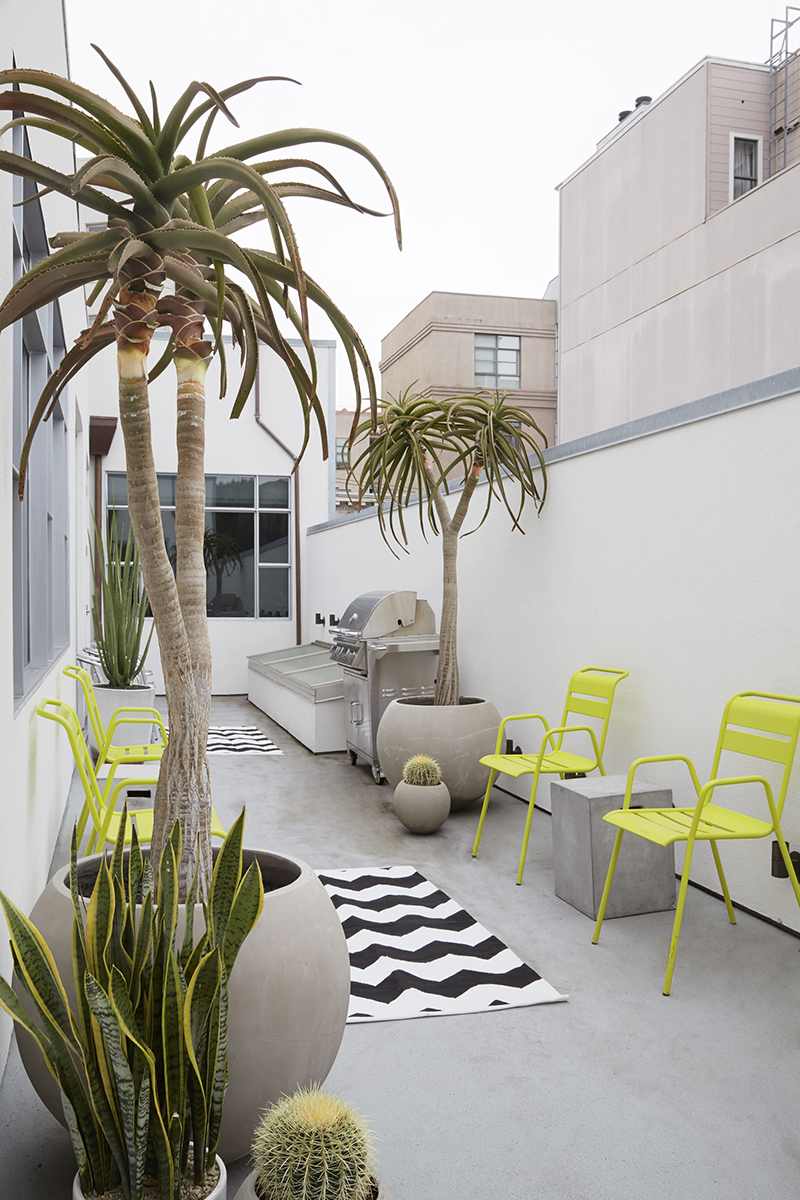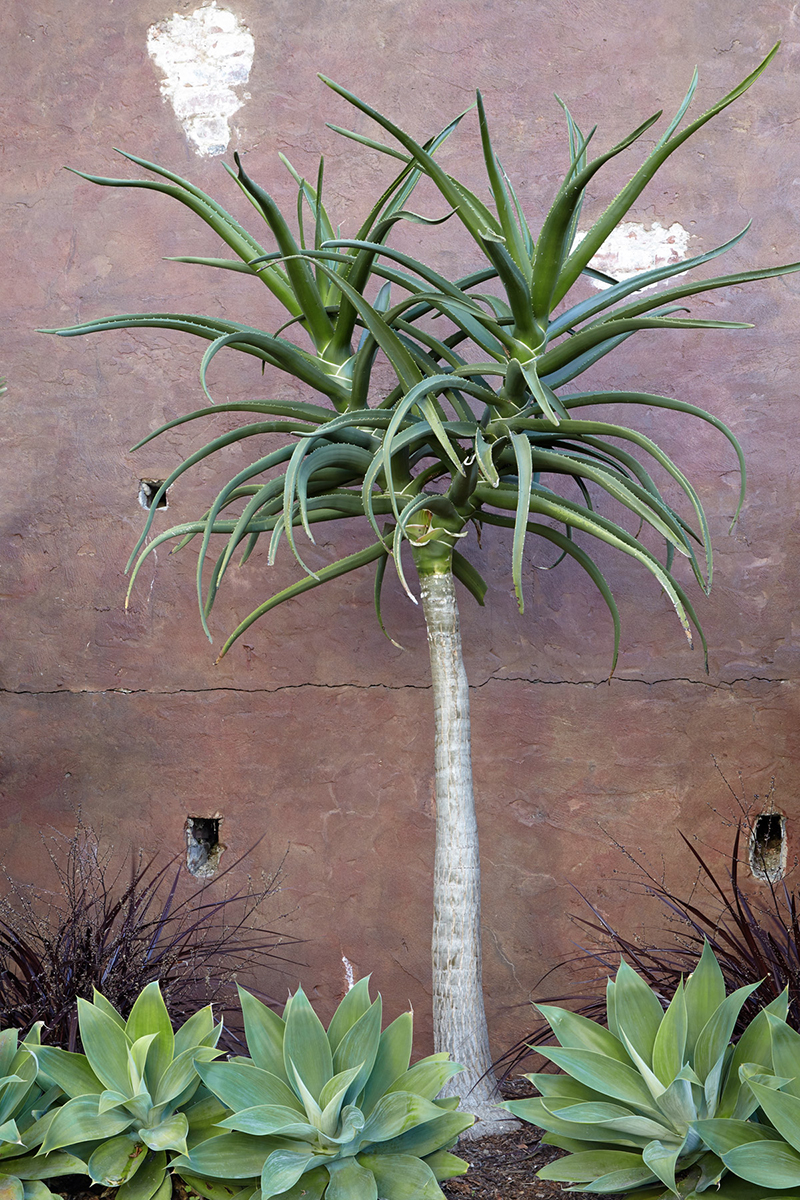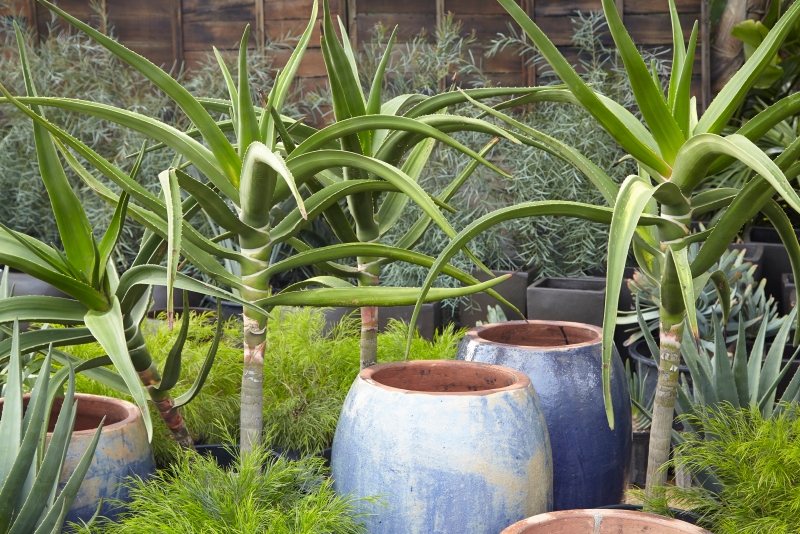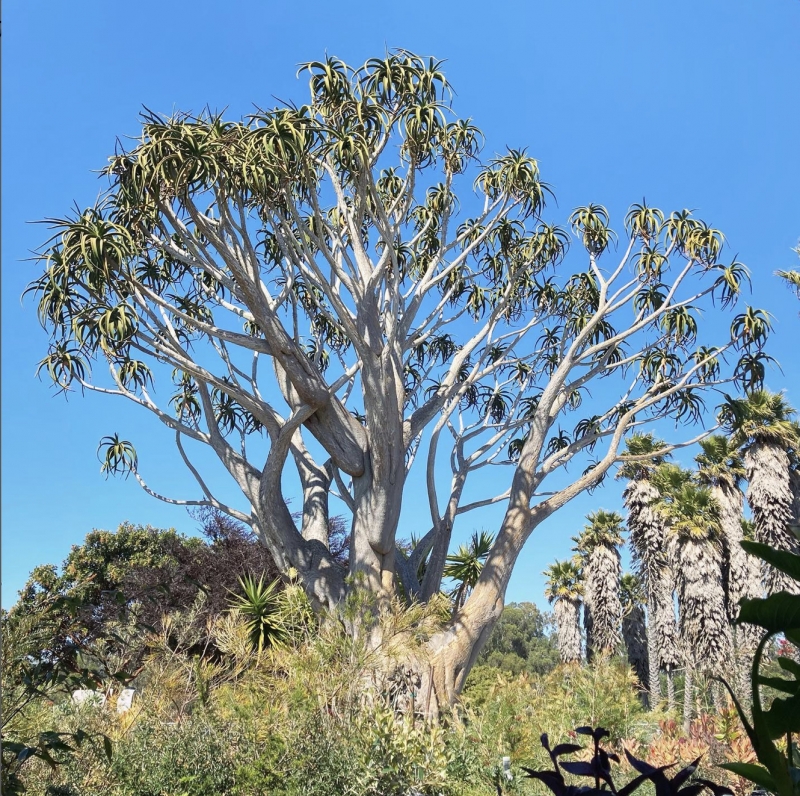




| synonyms | Aloidendron barberae Aloe bainesii |
|
| height | 12–25ft | |
| width | 10–15ft | |
| tolerates | Coast, Heat, Pots, Salt, Wind | |
| water needs |
Moderate | |
| water info |
This aloe needs additional summer water and often won’t thrive without it, especially away from the coast in full sun. At best the plant will look stressed and have few leaves. When given regular summer water, warmth, fertilizer and good drainage, this plant grows rapidly. | |
| hardy to |
25F | |
| exposure | Part Sun – Full Sun | |
| indoor outdoor |
Outdoor | |
| drainage | In Ground: Cactus Mix, In Pots: Cactus Mix, Tolerates Sandy Soil | |
| fertilizing | All Purpose | |
| origin | NE South Africa | |
| california native |
No | |
| sunset zones |
16, 17, 21–24 |
Full Sun
Six or more hours of sun beams directly landing on the plant's leaves.
Part Shade
Three to five hours of sun beams directly landing on the plant's leaves.
Part Sun
One to two hours of sun beams directly landing on the plants leaves.
Full Shade
The plant is never fully lit by sun beams,
but is in a bright spot or has dappled sunbeams playing over the leaves throughout the day.
Deep Shade
The plant never has dappled light on the leaves, and is in a place that feels dim, even on a nice sunny day.
